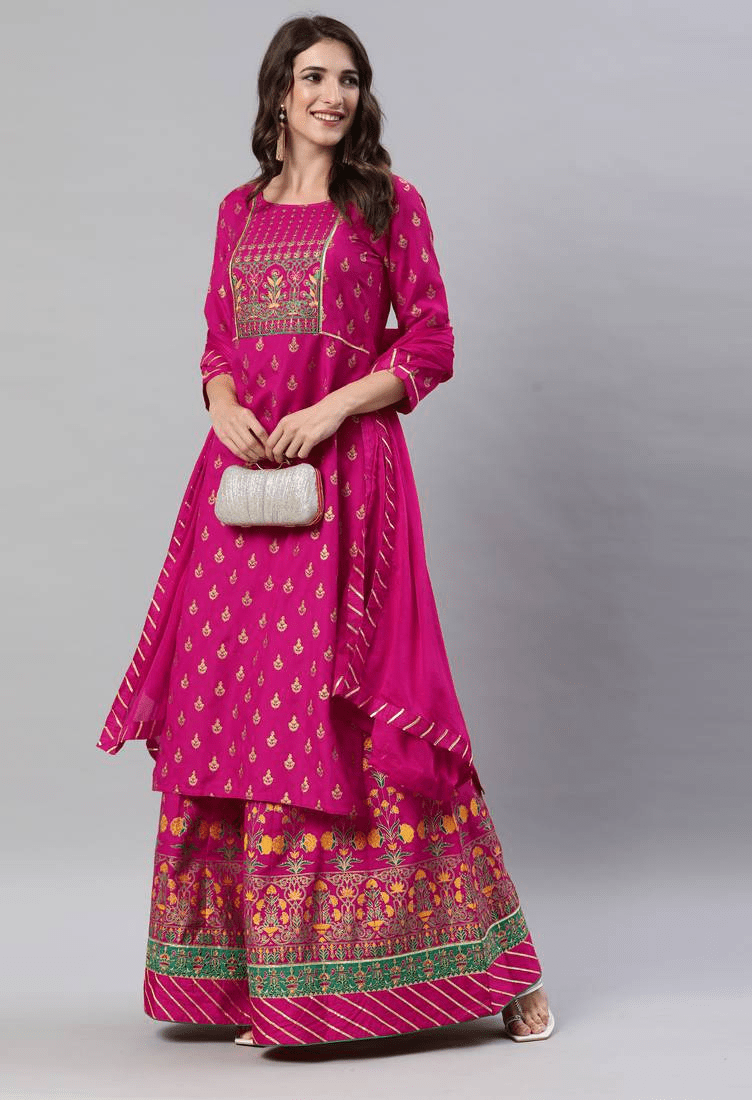- Saturday, April 20, 2024

By: Eastern Eye Staff
The adaptability of traditional clothing is demonstrated by the Indian kurta, a garment with origins in the long and interesting history of the Indian subcontinent. In addition to securing its position in Indian closets, its beautiful simplicity and broad appeal have made it a global fashion hit. With its ability to adapt to any occasion – from festive celebrations to casual outings – the kurta embodies the perfect blend of comfort, style, and cultural significance.
Tracing the Origins of the Indian Kurta
The kurta, conventionally a long, loose shirt whose length varies between the waist and knees, has been a staple of Indian attire for thousands of years. The Indus Valley’s ancient civilizations, where people wore clothing like the kurta, are where it first appeared. As different cultures and societies influenced Indian history over centuries, they brought with them their unique influences, leading to a fascinating diversity in the styles, designs, and embellishments of the kurta.
The Unisex Appeal of the Kurta: Breaking Gender Norms
The kurta’s broad appeal is one of its distinguishing features. The kurta is a pioneer of this trend at a time when the fashion industry is embracing gender-fluidity and doing away with strict gender conventions. The kurta is equally popular among men and women, with the styles and cuts varying to cater to different tastes. With regards to women, the kurta can be seen in the form of a flowing tunic coupled with a ‘dupatta’ or a ‘salwar’. Whereas, for men, the kurta is worn with ‘pyjamas’ or ‘dhotis’. Due to its versatility and its all-encompassing, the kurta has become a wardrobe must-have, regardless of gender.
From Traditional Roots to Contemporary Innovations: The Kurta’s Evolution
The kurta has developed over time to accommodate the shifting fashions and tastes of the contemporary world. This evolution has blended with its traditional essence. Initially, kurtas were primarily made from natural fabrics such as cotton and silk. Over time, as the fashion industry advanced and new materials became available, the humble kurta too underwent a transformation. Today, it’s not uncommon to find kurtas made from georgette, crepe, and even blended fabrics. Additionally, modern kurtas come in a range of designs, including digital patterns, elaborate embellishments, western-inspired cuts, and fusion styles, signifying a seamless union of tradition and modernity. Traditional kurtas were frequently plain and unadorned.
Styling the Kurta: A World of Possibilities

The beauty of the kurta lies in its flexibility when it comes to styling. You can pair it with a range of different bottoms to create unique looks. For a traditional look, pair your kurta with a ‘salwar’ or ‘churidar.’ If you prefer a more modern style, leggings or even jeans can serve as excellent counterparts to your kurta. Don’t forget to accessorize – traditional Indian jewelry, a stylish handbag, or a pair of chic sandals can elevate your kurta ensemble to new heights.
The Kurta and Its Regional Variants
Another fascinating aspect of the kurta is its regional variants. The kurta takes on distinctive forms all throughout India, influenced by regional cultures, climatic conditions, and customs. For instance, the “kurti” from Uttar Pradesh is frequently longer and worn with a “churidar,” but the “kurta” from Punjab is typically short and worn with a “patiala salwar.” The ‘kurta’ or ‘kurti’ is frequently paired with a ‘davani,’ a kind of half-sari, in the southern states.
The Kurta in Global Fashion
While the kurta remains a classic Indian garment, its influence extends far beyond the subcontinent. The universality and adaptability of the kurta have made it a favorite in global fashion circles. Today, you can spot kurtas in international high-street stores and designer collections, often presented as tunics or long shirts. Global celebrities have been spotted donning the kurta, further adding to its international appeal.
The Kurta and Sustainable Fashion
In an era where sustainability in fashion is not just desired but necessary, the kurta stands out as an environmentally conscious choice. Traditional kurtas are often made from natural materials like cotton and silk. Many modern designers and brands continue this practice, offering kurtas made from organic cotton, khadi, and other sustainable fabrics. Moreover, the timeless appeal of the kurta ensures it never goes out of style, making it a perfect addition to a sustainable, capsule wardrobe.
Kurtas and the Indian Festivals
No discussion about the kurta would be complete without mentioning its role in Indian festivals. Be it Diwali, Eid, Navaratri, or Holi, a kurta is often the preferred choice of attire for both men and women. The comfort it offers, coupled with the ability to dress it up or down, makes the kurta an ideal outfit for festive celebrations.
The Future of the Kurta

As Indian fashion progresses, the kurta will play a vital part in its progress. With new designers bringing innovative ideas to the table, the kurta is continually evolving. From experimental cuts and fabrics to incorporating elements from global fashion trends, the future of the kurta promises to be as exciting and versatile as its present.
In conclusion, the Indian kurta, with its rich history, universal appeal, and adaptability, has earned its place as a versatile garment for every wardrobe. Its journey from a traditional Indian garment to a global fashion staple is a testament to its timeless charm and elegance. The kurta is here to stay and will adorn our closets with its flexible beauty as it continues to develop and adapt to current styles.